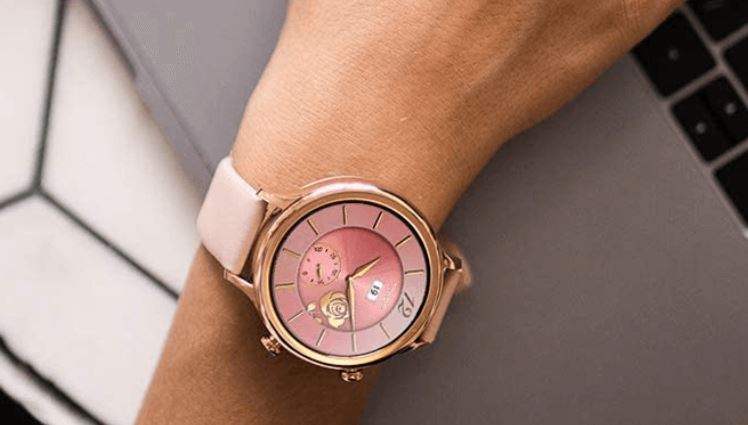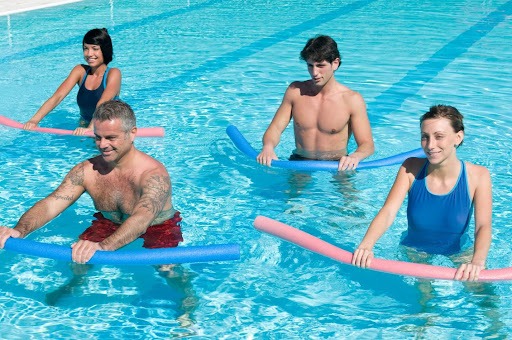“Mirror’s gorgeous design is backed with exciting workouts for any experience level.” Fitness.
- Stunning looking design
- A diverse range of workouts
- Offers 1-on-1 personal training
- Simple installation
- Heart rate monitor disconnects
- You’ll need to supply your own workout accessories
It’s been a minute since I took on a proper fitness challenge. And with foot problems setting me back the last few years and quarantine this year. I’m far removed from the pinnacle of my super fit days. Even with all of the setbacks, adaptation is key to overcoming the adversities we all face to stay fit and active.
That’s exactly what fascinates me about the Mirror. A $1,500 connected home gym solution that offers a wide array of on-demand and lives workout classes. As its name implies, it looks exactly like an ordinary full-body mirror. It’s one of the many connected fitness displays that are looking to revolutionize the gym experience. But does it have enough to convince people that it’s equal to the standard gym membership?
Utterly gorgeous design
The mirror looks stunning! Well, that’s partly because it’s designed to look like a mirror you may already have around. The reflective slab measures in at 52.6 by 21.1 by 1.7 inches, which is a little bit deceiving on paper because the entire thing tips the scale at a whopping 70 pounds. It’s on the heavy side for sure. So I’d recommend getting some help if you opt for self-installation as I did. But every Mirror purchase comes with a white glove delivery service.
Installation was actually more of a breeze than I initially thought, with the entire process taking about 45 minutes from start to finish. I installed the Mirror using the “wall anchors and stand” option, seeing that straight wall mounting involves a lot more drilling on my part. Instead, it requires drilling just two holes into the wall, inserting the anchors, and attaching the Mirror with a hook.
Back to the design, it’s hard to believe it’s a tech gadget while standing idle on the wall. I have it placed in my living room, right near the front door. So it’s the perfect thing to check myself out before heading out. What’s interesting is that this reflective slab features a 40-inch 1080p display with a 178-degree viewing angle, 5-megapixel camera, two 10-watt speakers, quad-core processor, Bluetooth, and dual-band 802.11 A/B/G/N Wi-Fi. All of that is crammed into a seamless slate with hard lines that blends beautifully with any decor.
The dual speakers are a joy, delivering clear instructions from the trainers and churning out some appropriate tunes. Through the Mirror app, you can adjust the volume of the music and instructor to your liking. And finally, a 5-megapixel camera embedded within the top edge of the Mirror allows trainers to see you during live classes (if you opt in). The Mirror comes with a cover that goes over the camera if you’re concerned about privacy.
Diverse workout variety
Getting into a solid workout routine is tough. Ask an expert about what’s the best workout exercise out there, and the answers can vary wildly. However, I do know that it all comes down to what results you want to achieve. Quarantine life netted me a few extra pounds since its start, but I focused my efforts on micro workouts. As a result, despite my weight increasing, consistent weight training yielded more muscle mass.
I thought I was somewhat in shape before using Mirror. But boy, was I wrong; it has kicked my butt time after time! That’s an understatement because now I realize the advantage of doing these group classes at home: I’m just embarrassing myself instead of people watching me flail around as I struggle with some of the workouts. But that’s understandable for anyone doing a new workout routine.
Mirror offers a great variety with its workouts, ranging from full-body strength workouts covering broad muscle groups to more specific classes like yoga and pilates. There’s something for everyone, and I appreciate how you can tailor workouts to your liking through the Mirror app. Don’t have a lot of time? You can filter classes to 15-, 30-, 45-, and 60-minute sessions. The classes are fun and informative, which is only complemented by their helpful instructors who motivate.
It’s convenient to be able to watch them do exercises. But I wish there was a way to offer side-by-side views of them (front and profile) to distinguish better what’s proper form. However, some instructors switch to a profile view to provide me with a better visual of the exercise. Also, while some classes will require equipment, like dumbbells, a chair, or yoga blocks, you can filter to omit them.
If you’re not shy, you can choose to have your camera active during live workouts, giving the trainers a quick peek at you. Conversely, you can choose to keep the camera off and even cover it up with the included attachment to make sure no one can see you.
A few nuances
Long before I researched more about Mirror, I always thought it was a giant touchscreen; it’s not. To interact with Mirror, a smartphone is required. You’ll need it to launch classes, send notes or emojis in real-time during workouts, take post-workout selfies, and rate classes. Thankfully, it’s minimal interaction while working out, which I like because focusing on the workout is more important. But instructors occasionally ask to hit that 100% or fire emoji in the app if you’re feeling the burn.
I did come across some minor nuisances with Mirror. First of all, you need to be connected to the same wireless network to boot up Mirror. In one instance, I didn’t realize I was connected to my secondary wireless network, and it could not connect. It’s odd, in my opinion, but something to remember if you happen to find yourself in this predicament. Fitness.
Secondly, I noticed that Mirror would indiscriminately stop displaying my heart rate reading on-screen during workouts. I later found that it’s related to my smartphone timing out, which is strange because you’d think that the Bluetooth connection would remain intact if my phone’s display turned off, but it doesn’t. So eventually, I set my Android smartphone to time out after 30 minutes to prevent the heart rate monitor’s disconnect.
I’d like to see these two issues get resolved because the last thing you want to happen right before jumping into a live class is having to fiddle around with the Mirror.
Who is Mirror for?
I think this is the fundamental question you need to ask yourself if you’re researching the best solution for your needs with in-home workouts. The mirror does a fantastic job appealing to a broad audience, thanks largely to its diverse classes and the ability to tailor classes based on your needs.
Since most classes are mainly strength and cardio exercises, it’s the kind of workout that’ll make you sweat, feel the burn, and burn some calories. With most 45-minute classes I’ve taken, I generally burn about 550 calories in the process. That’s because the workouts involve a mix of routines done in three to four sets, focusing on different muscle groups. The total body workouts are prime examples of this. Obviously, if you’ve never tried these kinds of workouts, they’re going to be challenging regardless of how physically fit you think you are. I know this firsthand from doing a yoga workout, as I must’ve cracked muscles and joints I rarely test with my usual lifting workouts. Fitness.
Even though Mirror’s workouts can be supplemented by additional equipment, like dumbbells, a jump rope, kettlebells, and much more, I enjoy that you can still get a solid workout and make improvements without them. Sure, it’d be nice if Mirror could somehow track progress with these accessories, such as being able to know you’re improving each week by adding more weight to your bench press exercises. Still, it’s a prospect I hope that’s incorporated in the future. Fitness
The best part about Mirror is that it doesn’t take a lot to get started, have fun, and feel good about your workouts.
![]()












